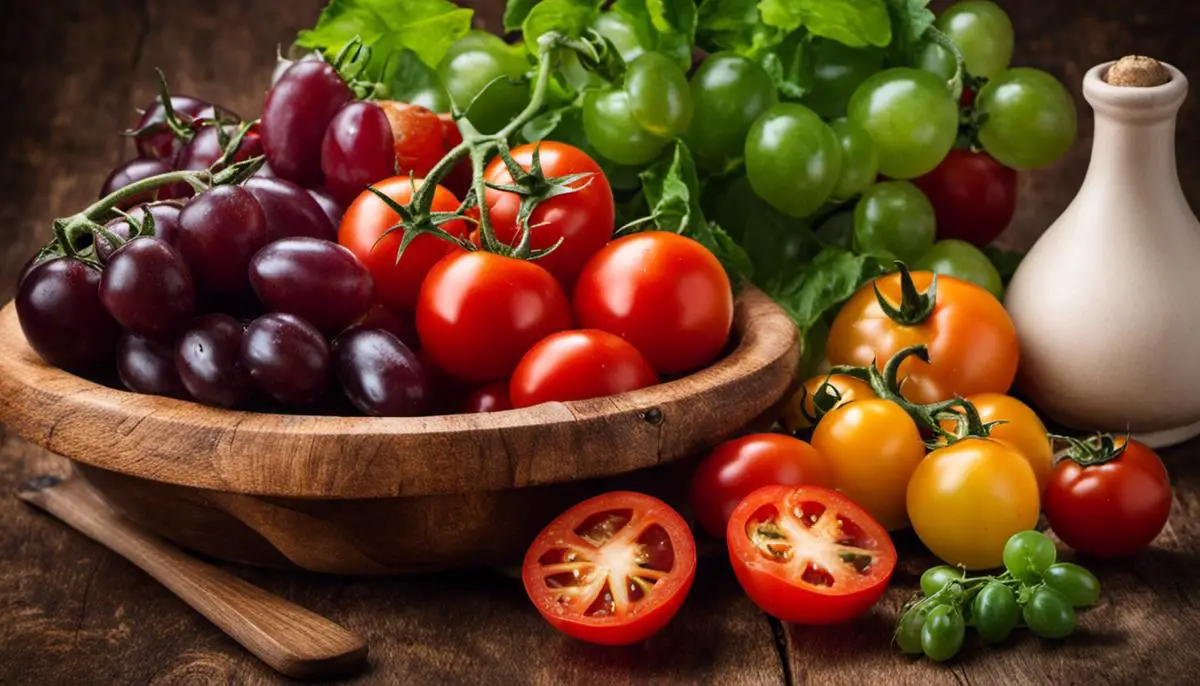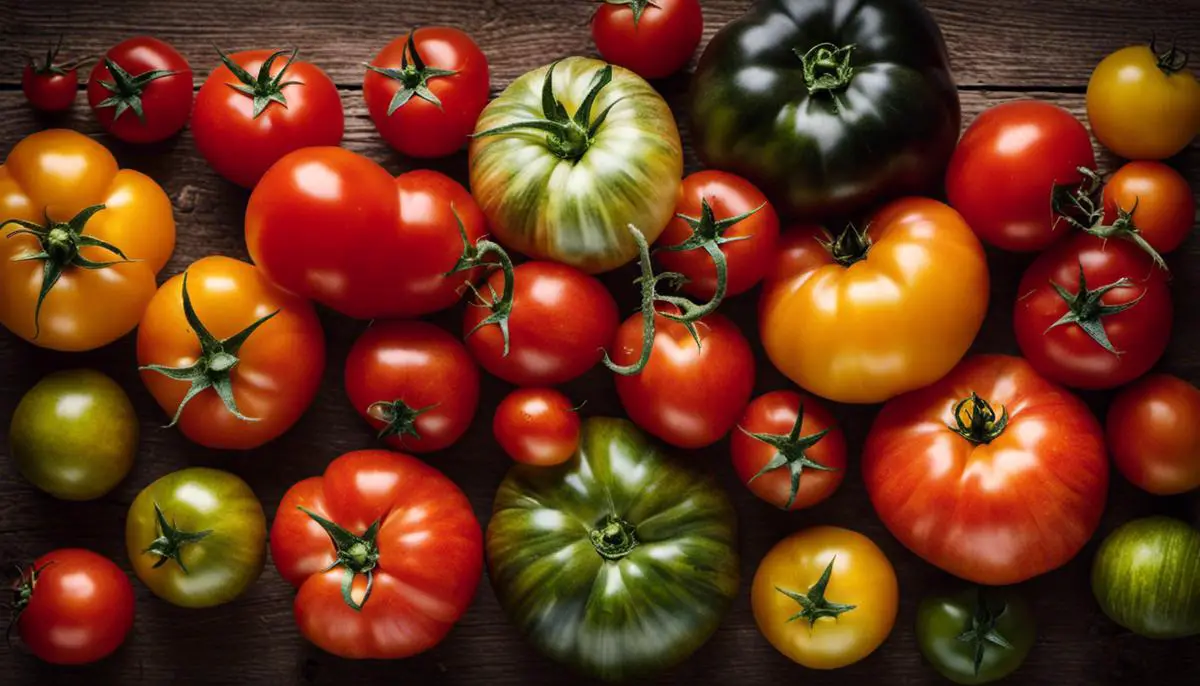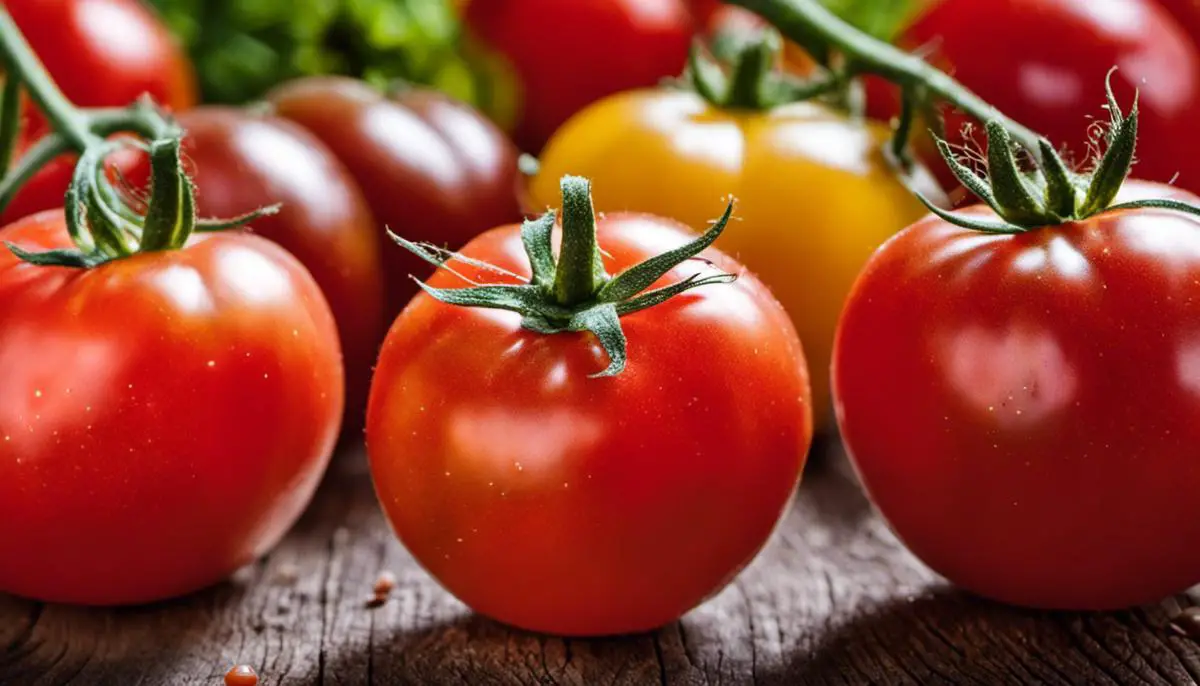Tomatoes, with their bright hues, succulent textures, and rich flavors, are not just pantry staples; they’re the heroes of many acclaimed dishes. From luscious Italian pasta sauces and vibrant summer salads, to comforting soups and curb-side tacos, tomatoes have made their mark in different cuisines worldwide. This isn’t merely about throwing a tomato into a recipe; it’s about understanding the various varieties of this versatile fruit, knowing when they’re at their ripest, storing them correctly, and using the right preparation techniques to enhance their flavor even more.
Choosing the Right Tomatoes
Picking the Perfect Tomato: An Indispensable Guide
It all starts with a tomato – a plain, unassuming fruit that holds the ability to elevate the most humble of recipes, or deflate the grandest culinary aspirations. As cooks, food enthusiasts, or even just regular eaters, we’ve all been there, confused in the produce aisle, faced with a myriad of multi-colored, multi-shaped tomatoes. So, let’s dive into the sumptuous world of tomatoes, and understand how to choose the best tomatoes for our recipes.
Reader Poll: What online courses would interest you?
Firstly, you must understand that, like the people sharing them, every recipe has a unique personality. A good, juicy hamburger sings when topped with a firm slice of a brightly colored beefsteak tomato, and your grandma’s secret spaghetti sauce recipe might only be brought to life by using the ripest Romas.
For sandwiches, salads, or simply eating out of your hand, beefsteak tomatoes are the way to go. Their thick, meaty texture and sweet flavor make them an ideal addition to dishes that require a robust kick. Look for specimens with a brilliant red color. The skin should be smooth, shiny, and taut – not bruised or wrinkled. When held, the tomato should feel heavy for its size, an indicator of juiciness. Because of their large size, beefsteak tomatoes are ideal for those satisfyingly thick slices that are perfect in a sandwich or sprinkled with salt and pepper for a simple, delectable snack.
Moving along to the realm of pasta sauces, stews, and any other recipe that requires tomatoes to be cooked down, Roma tomatoes, also known as “plum” tomatoes, steal the spotlight. These are typically oval in shape, possessing a deep red color and dense flesh with fewer seeds. Roma tomatoes have less water content, giving them a naturally thicker consistency once cooked. When selecting these, observe the same guidelines proposed for beefsteak tomatoes, but keep in mind that Roma tomatoes tend to be firmer when ripe.
Subscribe to our newsletter!
On the other end of the spectrum, Cherry and Grape tomatoes are just delightful for a pop of flavor in salads, as garnishes, or just as a snack. Their small size means they’re packed full of taste, delivering a vibrant, sweet tang. Opt for ones that have firm, glossy skins and are free from blemishes. The stem should still be fresh, bearing signs that the tomato was plucked at its prime.
Even with these guidelines, nothing can truly replace intuition and experience. Press the tomato gently – it should yield slightly under pressure, but not feel mushy. Sniff the tomato at the stem end. Fresh tomatoes promise a distinct, earthy aroma, an olfactory affirmation of ripeness.
Coming back to our shared love for food and connection, remember to forge ties with local farmers and visit farmer’s markets when possible. Not only does this support local businesses, but it also allows access to the freshest, most flavorful tomatoes available. And don’t forget to be adventurous! With heirloom varieties popping up, the world of tomatoes welcomes new taste explorations.
In essence, selecting tomatoes isn’t just about ensuring you’re getting the best quality for the value, but also about enriching each culinary exploration, ensuring that every meal shared is one wrapped in the warmth and love that is reminiscent of the best tomato-based recipe – a symbol of collective culinary traditions.

Tomato Preparation Techniques
Diving right into the meat—no pun intended—of culinary tomato usage, it cannot be overstressed how beloved tomatoes are when we’re talking food literature and creation. It’s not just about picking the right type or ensuring the freshness, but also about preparing them in such a way to unlock their best flavors and potential.
One of the time-tried approaches in the chef community is trusting the good old roasting technique. Roasting tomatoes, particularly the juicer, fleshier types, like beefsteaks or Romas, intensifies their flavors, making them remarkably sweet while maintaining that hint of savory charm. To roast tomatoes, simply slice them in half, drizzle with a bit of olive oil, season lightly with salt and pepper, then roast in a pre-heated oven at 400 degrees Fahrenheit for around 15-20 minutes.
Blanching, another culinary technique, is ideal for those instances when needing to remove tomato skins—say, for a smooth tomato sauce or soup. The process involves dropping the tomatoes in boiling water for a minute, then transferring immediately to icy cold water. The skin will then peel off effortlessly, preserving the rich, vibrant flesh underneath.
If you’re dealing with smaller varieties like cherry or grape tomatoes, consider charring them in a sizzling hot skillet with a dash of oil. It’s a simple yet effective way to coax their sweetness and lends an irresistible smoky nuance to their flavor profile.
For folks who adore a little tang, marinating tomatoes brings out such an alluring zing. It’s as simple as dicing your tomatoes, adding some olive oil, a splash of balsamic vinegar, and a smattering of fresh herbs, then let the flavors meld.
Tomatoes, these culinary jewels, are also fantastic when confit. For a luxurious touch, bathe them gently in olive oil and slow-cooked, encouraging them to surrender their juices and sweetness. Confit grape or cherry tomatoes add a phenomenal touch to pastas, salads, or simply spread over a hunk of crusty bread.
Dehydrated tomatoes, also known as sun-dried, are a perfect option when one needs a tomato punch in the depths of winter when fresh varieties may not be at their peak. The dehydration process condenses the flavors, enhancing the sweetness and tartness simultaneously leading to a flavor bomb.
So why not, the next time you find yourself in the kitchen, take a culinary adventure with tomatoes? Experiment with these different techniques and savor the array of flavors they can add to your meals. Embrace not just the tomato’s versatility, but honor how each method of preparation respects and highlights one of nature’s true gifts to our gastronomy. After all, food exploration is the spice of life, and nothing speaks more profoundly about our shared human experience than the meals we prepare and share.

Cooking Different Tomato Recipes
How to Follow Various Tomato Recipe Guidelines for Best Results
Moving forward from the diligent selection of your favorite tomato variety, understanding the diverse ways to prepare them offers an exciting extension of your culinary skills. Just as tomatoes differ in size, shape, and flavor, so are the techniques to bring out their unique characteristics. With a bit of foreknowledge and practice, mastering these techniques can elevate your tomato dishes to a new level.
Roasting tomatoes is a phenomenal way to concentrate a tomato’s flavors while introducing a caramelized richness. To roast, simply drizzle halved tomatoes with a quality olive oil, sprinkle with salt, pepper and your chosen herbs, pop them into a preheated 375-degree oven for around an hour. The result? Mouthwatering, juicy tomatoes with an intensified flavor that’s perfect for pastas, risottos, and bruschettas.
Ever struggled with tough tomato skins in your dish? The answer is blanching, a technique that allows for easy skin removal. To do this, you’ll need to score the bottom of your tomatoes with an ‘x,’ immerse in boiling water for about 30-60 seconds then plunge into an ice bath. The skin will effortlessly peel away leaving you with all the wonderful tomato pureness for your recipes.
For a robust, smoky flavor, consider charring your smaller tomatoes. This technique is quite simple, especially when using a cast-iron skillet. Heat the skillet till it’s smoking hot, place dry tomatoes in, and let them char – resist the urge to move them around. To complement any Mexican or barbecue-style dishes, charring is an absolute revelation.
Marinating tomatoes is an often-overlooked technique that injects an explosion of flavor to simple salads. Quarter your chosen tomatoes, add a mix of olive oil, balsamic vinegar, salt, pepper, and fresh basil, let it sit for about an hour. The outcome is a bowl of tomatoes bursting with a refreshingly tangy flavor profile.
Dive into the centuries-old technique of making tomato confit. Slow-cooking tomatoes in a bath of olive oil, garlic, and herbs under a low heat mellows the acidity, leaving you with a beautiful, silky texture. Tomato confit, while incredibly versatile, makes a deeply flavorful spread on crusty bread.
Finally, consider exploring the world of dehydrated tomatoes. Though this method is time-consuming, the resulting flavor intensity and unique texture are truly rewarding. Use these sun-dried jewels in pasta dishes, salads, or even rehydrate them in olive oil for a delightful, ready-to-use ingredient.
Altogether, cooking with tomatoes offers an incredible playground of flavors and textures. It bonds us to the warmth of tradition and invites us into a sphere of culinary creativity. So, roll up those sleeves and make something amazing – one tomato dish at a time.

Finally, delving into a plethora of tomato recipes, we comprehend the significance of additional ingredients and seasonings that harmonize with tomatoes. Garlic, onions, and a medley of fresh or dried herbs bring out the best in tomatoes, creating symphonies of flavors that satisfy diverse palates. So, whether you’re simmering a traditional pasta sauce, tossing up a fresh salad, or roasting tomatoes to intensify their sweetness, remember that each variety has something unique to offer. As you embark on more culinary adventures, let this newfound understanding of tomatoes be your guiding light, elevating your dishes to new heights.

